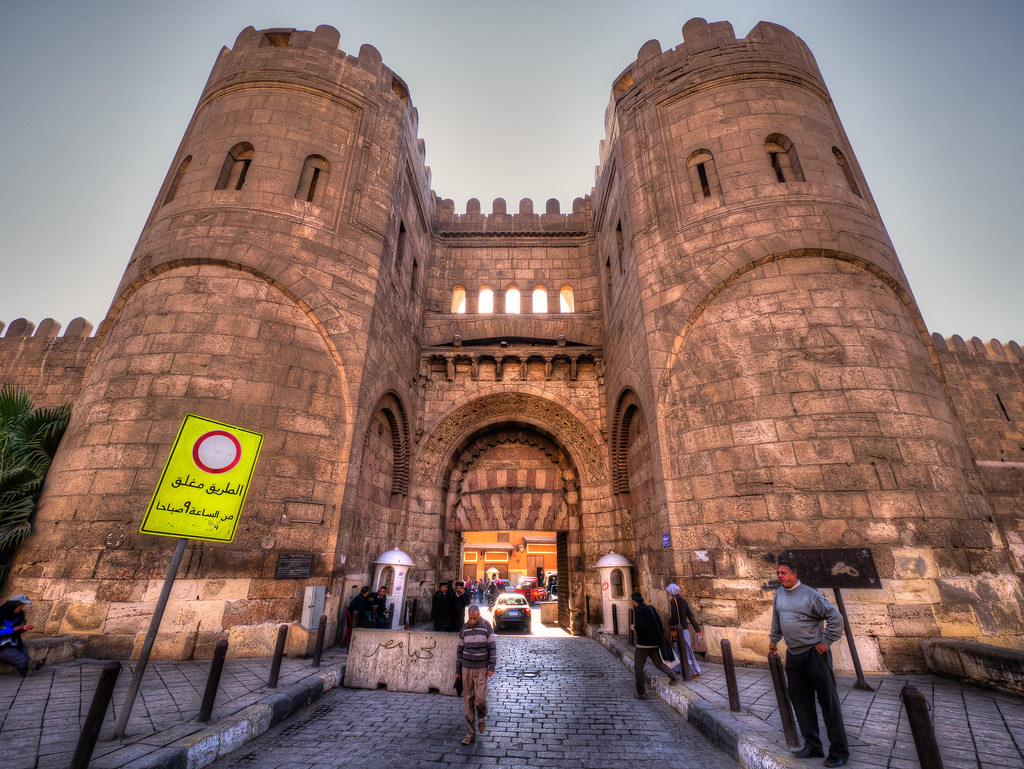Enter medieval Islamic Cairo: days of chivalry, a brave Gawhar al-Siqilli, and tall walls keeping mystical borders.
A city for the victorious, Cairo was built with a defensive wall in 969 AD by Gawahar al-Siqilli by order of invasion from the Fatimid caliph Al Muzz Li-Din Allah. In 1092, the Fatimids built a second wall around Cairo, and the double walled city had a significant number of gates at the portals, in hopes of protecting both the inner and outer city areas.
The gates, or Babwabat, were adorned with artistic elements and embellished with decorative features that spoke stories of victories, power, and influence. Their splendid designs were influenced by the Fatimid gates in Tunisia, evidently in the main gate to Mahdia.
The gates were initially built to provide a point of controlled access – they served to provide defense, security, health, trade, taxation, and representation, and were correspondingly staffed by military or municipal authorities.
The gates of Cairo acted as main entrances to the city. Here are only four of the many gates that existed in old Cairo.
Bab al Futuh
tion. The gate was bulldozed in 2013.







Comment (1)
[…] Like other ancient gates of the world, this gate acted as the Old City’s shield and, till today, is considered one of the last remaining Islamic monuments. […]